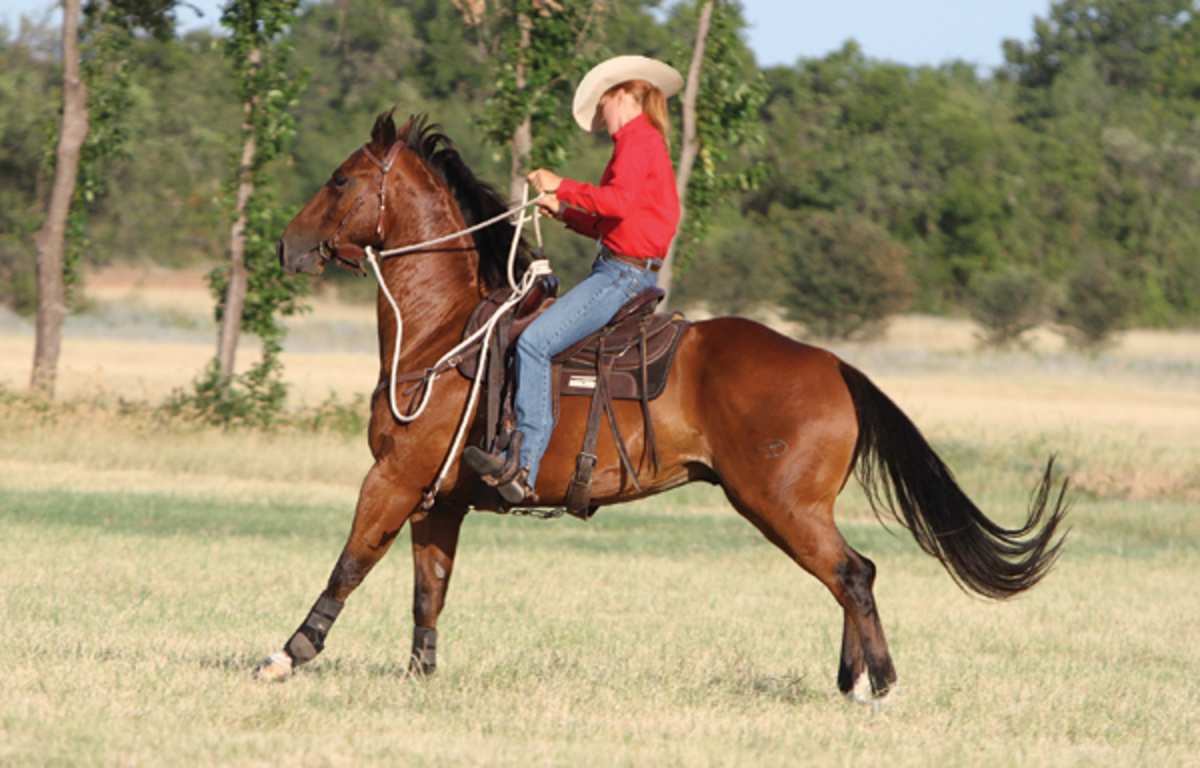
Does your horse display “buddy” behavior on the trail? Does he get anxious and misbehave if you ask him to move beyond or away from one or more of his equine friends? This is a common problem, and a mistake people often make trying to fix it is correcting the behavior without addressing what’s causing it.
I’ll give you a strategy that gets to the underlying cause of your horse’s buddy behavior—his desire to stick with the other horses. You’ll learn how to “make the right thing easy” by letting your horse stand, relax, and be petted when he’s with you alone, apart from the group. You’ll “make the wrong thing hard” by turning his group time into work time.
I’ll also suggest, in the box on page 62, some key before-you-go reminders to increase your overall chances of success on the trail.
A caveat: A horse that misbehaves on a trail ride isn’t something you can fix permanently in one outing. You’ll need consistent work over time to recondition your horse’s responses. If you try these techniques and still feel overwhelmed by your horse’s behavior, seek help from a pro.


Why This Method Works
As herd animals, horses naturally like to stick together. In the wild, a horse isolated from the rest of the herd is at greatest risk of a predator’s attack. So, “safety in numbers” is something horses take seriously. Some even carry this instinct to an extreme, developing a particular fondness for one or more others such that they feel comfortable only when they’re around those particular pals.
The solution is to reprogram your horse’s thinking. You want his first thought about hanging with his buddies to be “work” instead of “comfort.” By contrast, hanging out with you, apart from the group, is the easiest and most comfortable thing in the world.
This method succeeds because horses are inherently lazy. Given a choice, they’ll repeat the behavior that results in less work—and in this case, that means remaining calm away from the group.

Steps to Curing ‘Buddy’ Behavior
First, don’t try to stop buddy behavior before it starts. Let your horse commit to his behavior—fussing up when you ask him to leave the group. Then show him why acting that way doesn’t make sense—by making him feel mental pressure through hard, continuous work whenever he’s around his pals.
Ride among the group. When he gives you his “business,” ask your riding buddies to keep their horses still while you work yours in and around them. Say to your horse, “OK, if you want to stay with your buddies, here’s what you have to do.”
At a brisk trot, weave in and out among the group, making frequent changes of direction. Ride a figure-8 around the other horses, or “pole bend” among them. It doesn’t matter what you do as long as you make your horse work hard and continuously for several minutes, breaking a sweat.
(As you do this, of course, be mindful not to cut too close to the hindquarters of any of the other horses—you don’t want to startle them or prompt them to kick.)



Reward away from the group. After a few minutes of hard work, walk your horse a short distance away from the group—even just several yards if that’s as far as you can get him to go. Let him stand and relax while you pet and praise him for roughly the same amount of time that you worked him.
Work among the group again. If, as you return to the others, your horse wants to hustle back, let him. But as soon as he gets there, get his feet moving again, vigorously. You’ll need to repeat this sequence—working him within the group, then resting him apart—up to seven or eight times in a row, until your horse begins to make the connection. “Gee, being around my buddies is no fun—I’m even sweating! But being off on my own, where I’m rubbed and get my air back, is fun.”
Build gradually. As you repeat the cycle, progress from a trot to a lope when you’re working near the group if you feel comfortable doing so. Lope all the way around your friends, then reverse and lope around them the opposite way. Keep your horse moving.
Then, each time you take your horse away to rest, add another 50 to 100 feet so you’re going a little farther than you did the time before.


Watch for signs. When you notice your horse beginning to return to the group with slightly less enthusiasm, you’ll know your message is beginning to get through. Resume the trail ride, but if he starts showing buddy behavior again, repeat the work/rest cycle a few more times.
Follow the same procedure on successive rides, and over time your horse will stop being such an insistent buddy-seeker.
Clinton Anderson is a clinician, horse trainer, and competitor. Learn more about his clinics, appearances, and educational materials at DownunderHorsemanship.com. Catch his “Downunder Horsemanship” program (filmed at the ranch in Stephenville, Texas) on RFD-TV or at DownunderHorsemanship.tv.






